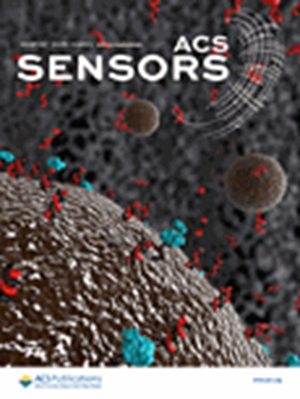PtNPs/普鲁士蓝修饰微电极阵列检测调节休眠状态的关键神经元。
IF 9.1
1区 化学
Q1 CHEMISTRY, ANALYTICAL
引用次数: 0
摘要
研究冬眠期间极低代谢状态下的神经元活动可能为代谢紊乱、中风治疗和太空旅行挑战提供新的解决方案。为了探索冬眠的神经机制,我们以西伯利亚花栗鼠(Tamias sibiricus)为研究对象建立了自然冬眠模型。然而,它们的特点是神经元放电弱,冬眠时间长,需要电极具有增强的检测灵敏度和特殊的长期稳定性。为了解决上述问题,我们开发了一种新的纳米复合铂纳米粒子/普鲁士蓝修饰微电极阵列(MEAs)。普鲁士蓝在检测过程中能与活性氧反应,减少炎症;因此,mea在检测单个神经元时达到了高信噪比(15.53±6.73),即使是在休眠状态下微弱的神经活动。我们发现三种类型的神经元对冬眠表现出不同的反应,并通过对信号的算法处理建立了三维特征来区分它们。3型神经元在极低的代谢状态下放电,这表明3型神经元对花栗鼠进入并保持深度冬眠而不损伤大脑至关重要。局部场电位(LFPs)的θ频带在觉醒过程中迅速增加,代表意识觉醒,可以作为预测觉醒的关键信号。这些结果填补了部分关于冬眠关键神经元特性的研究空白,为调控神经元控制机体进入低温低代谢状态提供了坚实的基础。本文章由计算机程序翻译,如有差异,请以英文原文为准。
PtNPs/Prussian Blue-Modified Microelectrode Arrays for Detection of Key Neurons Regulating Hibernation State.
Studying neuronal activity during hibernation's extremely low metabolic state may offer novel solutions for metabolic disorders, stroke treatment, and space travel challenges. To explore hibernation's neural mechanisms, we developed a natural hibernation model using Siberian chipmunks(Tamias sibiricus). However, their characteristic weak neuronal discharge and prolonged hibernation periods necessitate electrodes with both enhanced detection sensitivity and exceptional long-term stability. We developed a new nanocomposite platinum nanoparticles/Prussian blue-modified microelectrode arrays (MEAs) aimed at solving the above difficulties. Prussian blue can react with reactive oxygen species to reduce inflammation during the detection process; therefore, MEAs achieved a high signal-to-noise ratio (15.53 ± 6.73) in the detection of individual neurons, even against weak neural activity in dormant states. We discovered that three types of neurons exhibited distinct responses to hibernation and established three-dimensional characteristics to differentiate them through algorithmic processing of the signal. Type 3 neurons discharged in the extremely low metabolic state, indicating that Type 3 neurons are critical for chipmunks to enter and maintain deep hibernation without damaging the brain. The theta frequency band of local field potentials (LFPs) rapidly increased during arousal, representing consciousness arousal, and can be used as a key signal to predict arousal. These results fill part of the research gaps in the characteristics of critical neurons during hibernation and provide a solid foundation for regulating neurons to control the body into a state of low temperature and low metabolism.
求助全文
通过发布文献求助,成功后即可免费获取论文全文。
去求助
来源期刊

ACS Sensors
Chemical Engineering-Bioengineering
CiteScore
14.50
自引率
3.40%
发文量
372
期刊介绍:
ACS Sensors is a peer-reviewed research journal that focuses on the dissemination of new and original knowledge in the field of sensor science, particularly those that selectively sense chemical or biological species or processes. The journal covers a broad range of topics, including but not limited to biosensors, chemical sensors, gas sensors, intracellular sensors, single molecule sensors, cell chips, and microfluidic devices. It aims to publish articles that address conceptual advances in sensing technology applicable to various types of analytes or application papers that report on the use of existing sensing concepts in new ways or for new analytes.
 求助内容:
求助内容: 应助结果提醒方式:
应助结果提醒方式:


